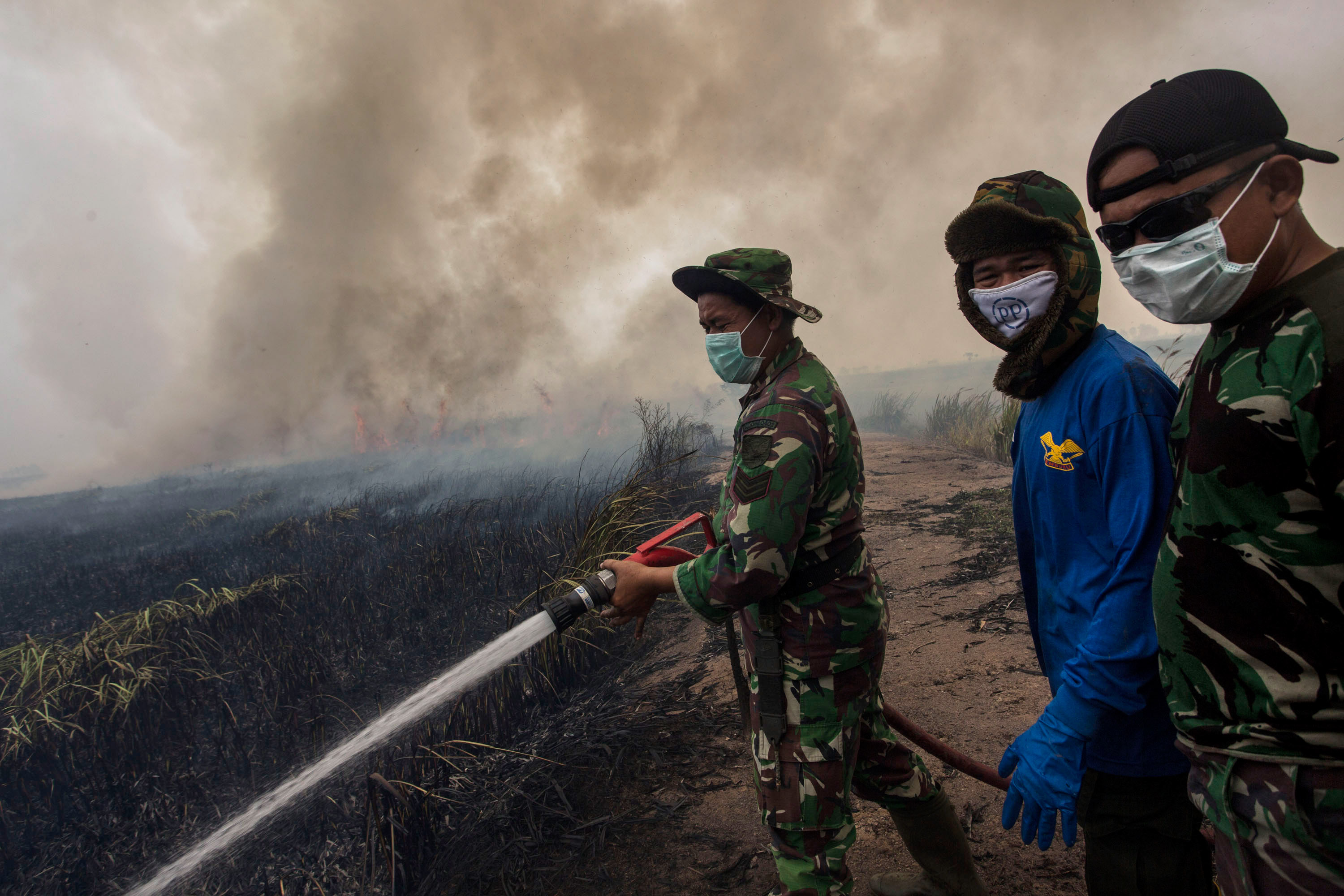Comment: Indonesia’s new plans to tackle forest fires fall short of Paris agreement targets

Earlier this month, the Indonesian government made a decision which was hailed as a major step forward in the fight against climate change.
President Joko ‘Jokowi’ Widodo’s administration issued a long-awaited revision to regulations designed to protect the nation’s fragile peatlands.
The Washington Post said the move “could help prevent wildfires” and with it stop “billions of tonnes of carbon emissions” entering the atmosphere.
And the news was a welcome relief to the tens of millions of people forced to breathe the smoke from peat fires which follow the clearing and draining of peatland. There were an estimated 100,000 premature deaths resulting across three countries from last year’s devastating Indonesian peat and forest fires.
But others are yet to be convinced. Jokowi’s promise has been undermined by perplexing compromises based on industry-sponsored science. Simply put, the new regulations won’t fulfil the President’s stated goals – or those of the Paris agreement.
Far from a ban
Existing plantation licenses for peatland cultivation remain valid under the new regulations, meaning that commercial exploitation can presumably continue for the 30-plus years that land use permits remain valid – with the potential for extensions up to roughly a century.
Read more: Haze from Indonesia forest fires caused 100,000 deaths in 2015 – study
What’s more, the regulations place only a temporary moratorium on new peat development, lasting a maximum of around two years, which is the longest time allowable before the government must complete its planned peat zoning process, which will separate areas to be protected from those that can be drained for plantations.
Divided, peat falls
The regulations require just 30% of each peat system to be zoned for protection, along with any further area in which the peat has a thickness of over 3m. Adopting the industry-supported “eko-hidro” model, this 30% is to be located over the slightly raised “dome” of thicker peat which occurs in the centre of many peat systems. The remaining area is to be zoned for production, where clearing and drainage are permitted.
This model has been soundly rejected by peat scientists and Indonesian environmental groups alike. The whole peat dome is hydrologically connected, so draining the perimeter will inevitably result in the collapse of the centre in any case. Wetlands International has likened this policy to “allowing smoking in the left side of a plane and forbidding it on the right side”.
Still a risk of fires
Indonesia’s peatlands formed over thousands of years through a process where a continuously high water table prevents the breakdown of organic material, locking carbon into deep deposits.
The regulations allow plantation companies to reverse this process, draining these crucial water tables so that non-wetlands species such as oil palm and pulpwood acacia can be grown in the peat swamps.
The regulations limit the depth of drainage to 0.4 meters below the surface of the peat. Allowing the top 40cm of peat to dry out means millions of hectares of peat will remain at risk of fire. Peat degradation will also continue: experts estimate that the 40cm policy will only reduce the speed of peat subsidence by around 20% compared with unfettered drainage.
As the top layer of drained peat oxidises and collapses, fresh peat is exposed within the 40cm permissible drainage zone, and so it goes on. Over the longer term, essentially the same amount of carbon will be emitted as if unlimited drainage were permitted. Modelling predicts that over a number of decades, drained peatlands will collapse, become flood-prone and unusable for plantations.
Ultimately, the 40cm drainage rule is a flawed compromise. Firstly any drainage will still have the negative impacts above, and secondly, according to industry, oil palm and acacia require deeper drainage to grow in peat soils.
On the plus side
Despite the overall disappointing business-as-usual approach of the regulations, there have been a number of positive initiatives introduced.
The previous regulations prohibited using fire to clear peatlands. Now landholders are expressly prohibited from allowing fires to take place, even if they did not light them. Although landholders’ strict liability for fires is already established under other environmental instruments, it is good to see it reiterated here.
The establishment of a continuous air quality monitoring system and public fire reporting system could also be a boon.
We are waiting to hear about government plans for monitoring and law enforcement, and how the regulations will dovetail with the work of the new Peatland Restoration Agency (BRG).
Paris agreement
The Indonesian government is looking to improved forests management to deliver over half of its Paris agreement emission reduction commitment.
Forestry sector reform is expected to deliver over half of the 29% promised reduction against predicted business-as-usual growth in emissions by 2030.
Peatland management, and these regulations in particular, are crucial to achieving that goal, yet as they stand now, they have no hope of doing so.
Yuyun Indradi is a Greenpeace Indonesia forest campaigner

